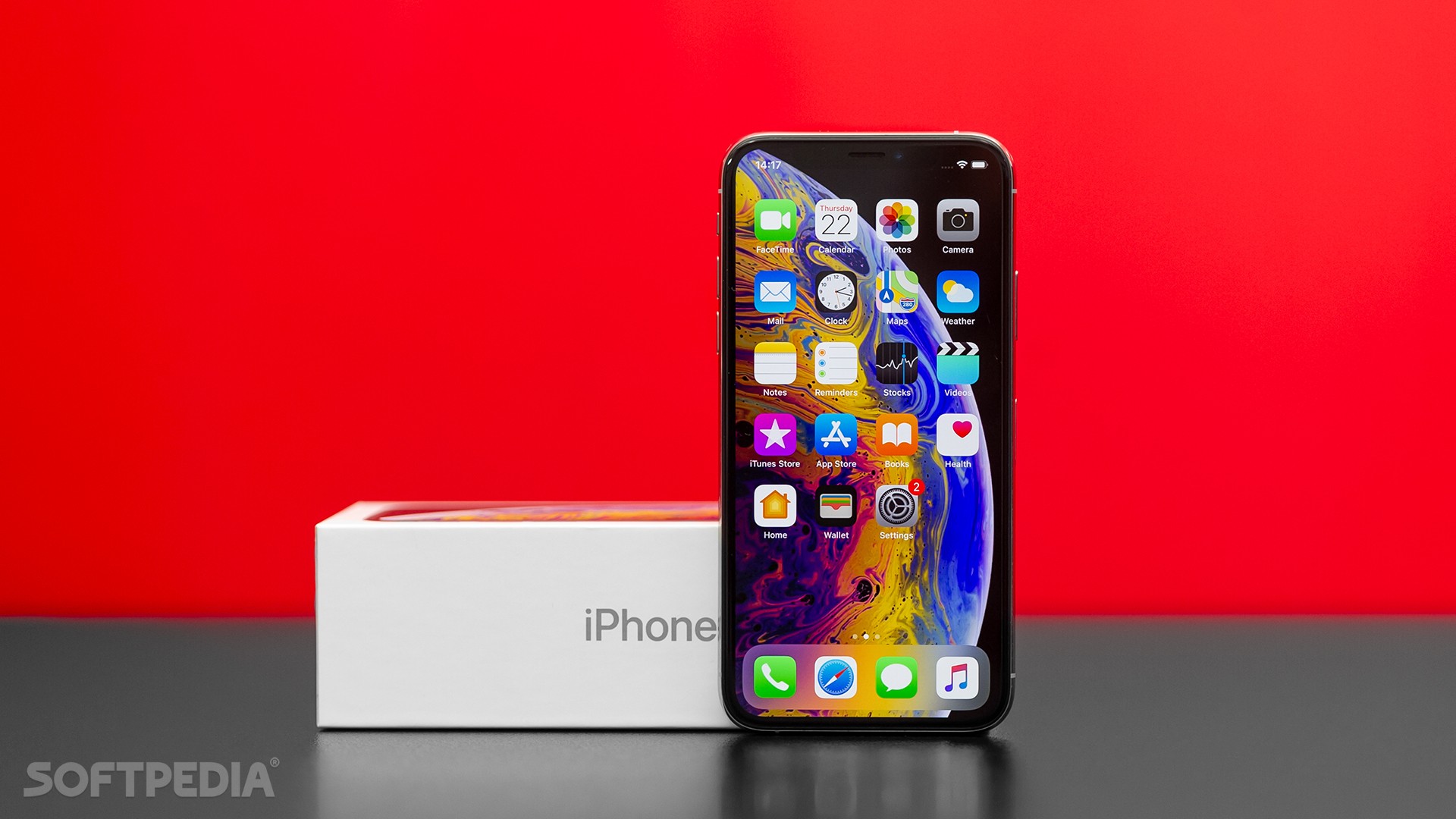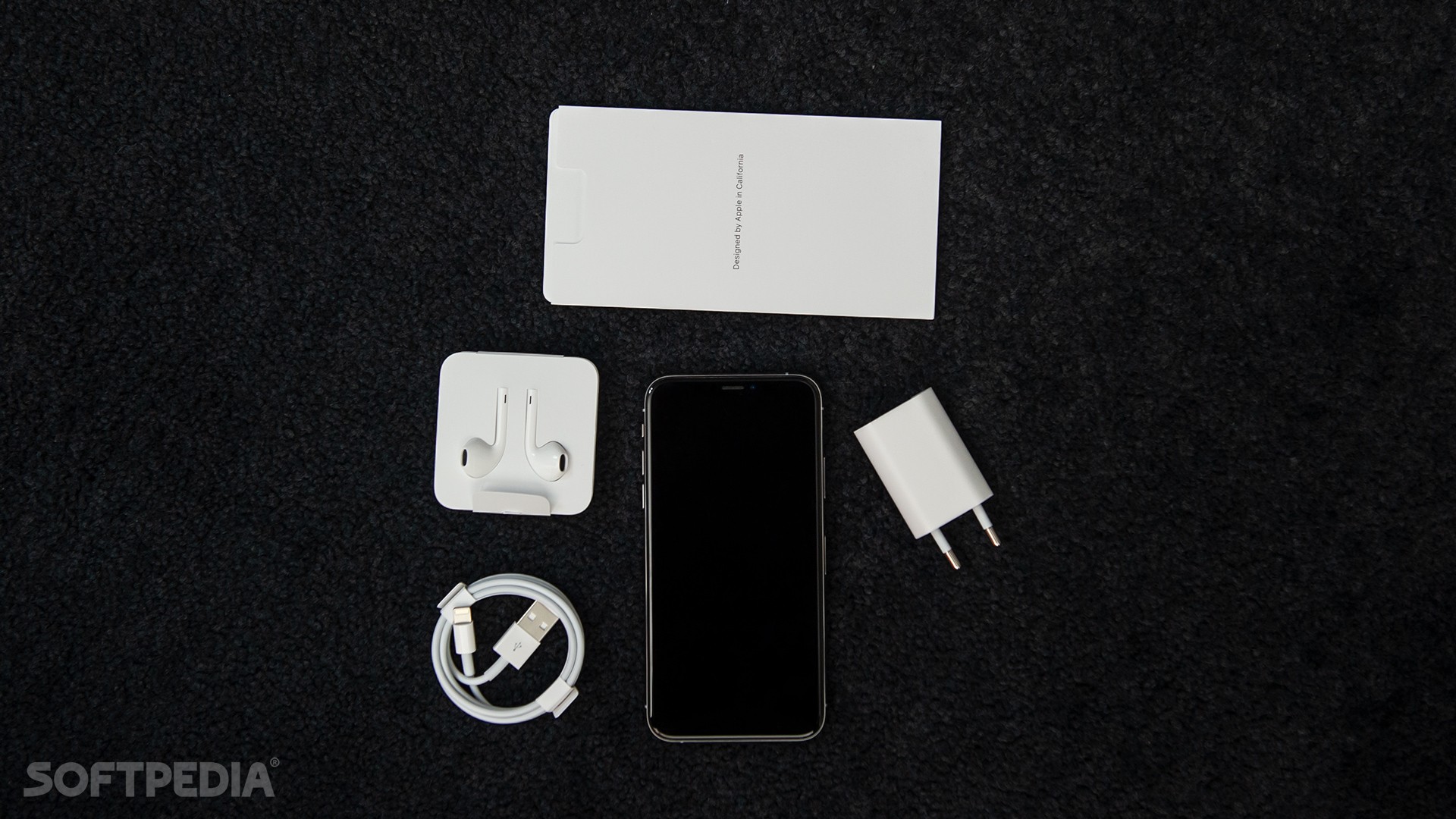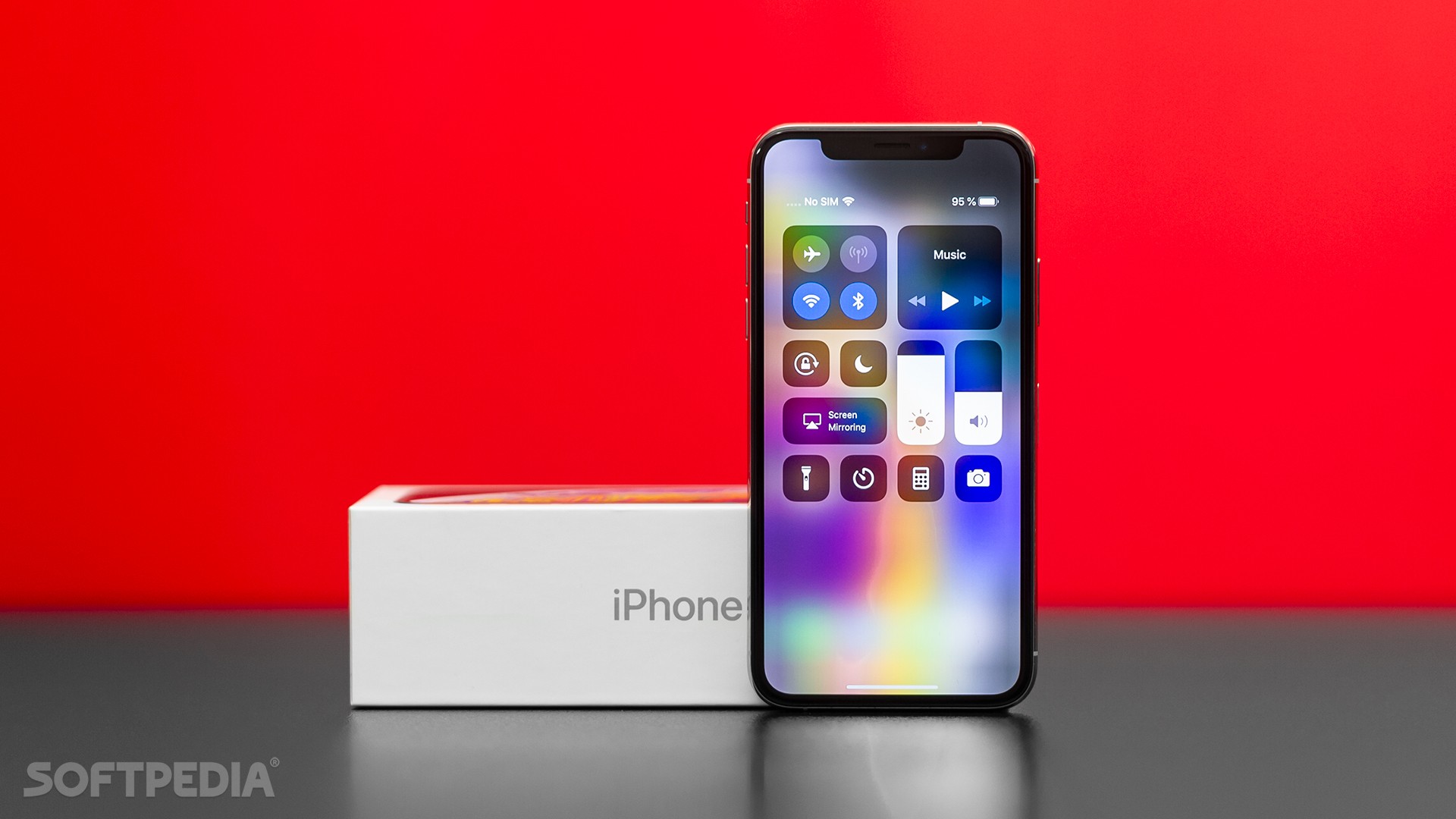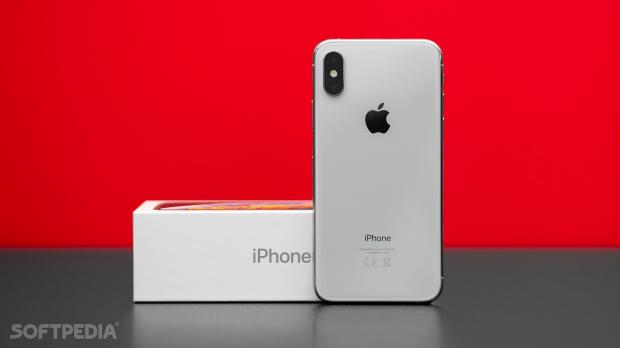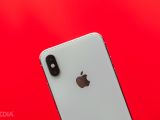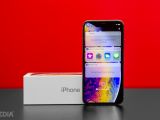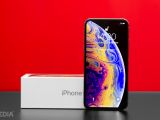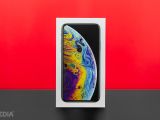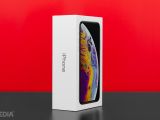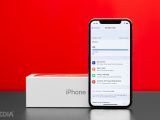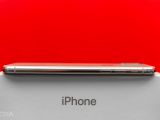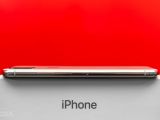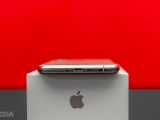iPhones have always been spectacular devices, despite their more difficult times. Even the iPhone X, which was pretty much the most controversial iPhone released in a long time, particularly due to the notch, ended up becoming quite a trend-setter.
Back in 2017 when Apple launched the iPhone X, many people were shocked to find out that Cupertino was asking no less than $999 for the base configuration.
Despite the super-high price, iPhone X was a hit. And in Apple’s mind, it paved the way for an even more expensive successor that eventually arrived the past September.
iPhone XS is available starting at $999 as well, but this time it comes with more storage versions, which obviously adds some extra dollars to its final price. However, given that Apple pulled the plug on the iPhone X entirely, it’s the only 5.8-inch notched iPhone you can get right now, though the parent company has tried to give customers more choices with the release of an even more expensive iPhone XS Max and a cheaper iPhone XR.
What we’re going to dissect today is the iPhone XS with 512GB storage, a brand new iPhone that looks and feels exactly like its predecessor.
Apple, however, says all the magic is hiding under the case, as the company has it implemented quite a plethora of upgrades that will provide you with a fabulous experience.
For this review, we’re going to focus less on the technical parts of the iPhone XS and more on the actual experience you get when using it. As you’ll discover, we’re going to discuss several other iPhone XS-related topics, including Apple’s somewhat odd approach that’s apparently generating a massive drop in demand worldwide.
First of all, when held in hand, this new iPhone doesn’t feel as the massive upgrade that Apple promised it would be, especially if you’ve used the iPhone X before. This is because the two phones are nearly identical in terms of looks.
Just as expected, it boasts quite an exquisite appearance, but that’s certainly not surprising given it’s an iPhone. The glass front and back and the stainless steel frame make it feel extremely compact and solid, though as I said several times, I wouldn’t test its durability.
There are tons of drop tests out there on YouTube, some of them claiming the iPhone can survive really strong hits or drops. But as I learned the hard way after I actually destroyed a bunch of smartphones by accident, it’s all a matter of luck and a mix of how the device hits the ground.
Since they share the same look, iPhone XS also has the same dimensions as its predecessor, and with a 5.8-inch screen and small bezels, it reaches a screen-to-body ratio of 82.9%.
This is by no means impressive given that there are smartphones out there going well beyond the 90 percent threshold, so I must admit that the iPhone XS looks good.
A few years ago, I insisted in a series of articles that what Apple needed was a 5.0-inch iPhone, as I considered the 4.7-inch model too small. iPhone X and iPhone XS are pretty much the 5.0-inch iPhone I hoped Cupertino would build, as the dimensions provide a mix of screen estate and usability that’s close to perfection.
At 177 grams, it’s easy to carry the iPhone XS around, and again, its dimensions makes it quite a breeze to store it in your pocket. This comes from someone who uses a Samsung Galaxy Note 9 on a daily basis, and honestly, using a smaller phone just feels sooooo comfortable and convenient.
And while there’s nothing I could complain about when it comes to the design, here’s a little rage. Just like the iPhone X, the new iPhone XS is extremely slippery, so when I told you that I’m not interested in drop tests, what I meant was that there’s a chance I’m going to do one on my own.
Without a case, the risk of smashing the iPhone to the ground is quite high. While buying a case would technically provide some extra grip and reduce damage if the nightmare becomes real, it comes with a major downside: it hides the fabulous look that I described above.
Apple hasn’t launched a high-quality clear case for the iPhone XS, so our only choice is sticking with alternatives built by third parties. And as we all know already, while there are some pretty good choices out there, nothing compares to a case built by Cupertino itself.
The iPhone XR, which is the cheapest iPhone launched this year and is available in a wider variety of colors, was supposed to come with a clear case, though this is nowhere to be seen right now. With such a case, you can keep enjoying the looks of the iPhone without the risk of smashing it to the ground.
And truth be told, Apple has no reason to invest in a clear case because guess who wins if you actually destroy an iPhone after you accidentally shatter its glass.
Apple says the iPhone XS comes with a scratch-resistant glass, just like its predecessor. And while I typically care about my phones and try to prevent physical damage as much as possible, you really don’t want to see my original iPhone X. Scratches do occur, and trust me, it’s much easier than you think to get one on the screen.
Also, I know some of you won’t gonna like this, but I still don’t think the notch is the right approach for a modern smartphone. While I already got used to it and I ignore it most of the time, I still think there are better solutions for a device that costs so much.
Samsung, for instance, is building a phone that comes with holes drilled into the screen, so that front-facing parts, like the selfie camera, wouldn’t require a notch. It would be all display, without the ugly notch at the top. Others are sticking with a notch but are making it substantially smaller.
For the second-generation iPhone X, Apple has actually decided to stick with its insane prices but made no changes in terms of the notch. And I find this rather disappointing as a long-term Apple customer.
In terms of hardware, there’s indeed some magic here, and we’re going to mention all the specs and only spend a little time discussing the most important.
The A12 Bionic chip is the very first iPhone processor built on a 7nm architecture, and for this generation, it’s paired with 4GB RAM. This is Apple’s personal best, all at a time when Android phones are reaching 10GB.
Apple’s GPU chip has also been upgraded from three cores to four cores, and there are now three different storage options, namely 64GB, 256GB, and 512GB. The 128GB version is no longer being offered.
The rest of the spec lineup has remained unchanged. You still get Face ID (and no fingerprint sensor), NFC for Apple Pay, fast and wireless charging, Bluetooth 5.0, stereo speaker without a 3.5mm audio connector, and the typical Lightning connector (in European markets too, despite the EU’s requirement for phone makers to use the same USB Type-C port on their phones).
The display is one of the most advanced parts of the new iPhone XS, and ironically, it’s built by Samsung. Some say the screen offers better performance than the one on Samsung’s flagships, like the Galaxy Note 9, and this could be true given that Apple is known as a company that spends a lot of time focusing on software optimizations.
The screen is 3D Touch-capable – starting this year, this is something that needs to be mentioned, as Apple has removed the feature from iPhone XR and there’s a chance it would get the ax on the rest of the iPhones beginning with the 2019 lineup.
However, what I find truly remarkable is the advanced calibration of the TrueTone system and the response offered by the display, somewhat to be expected given it’s a 120 Hz screen.
When I used the iPhone X for the first time, which was only a few days after its launch, I described TrueTone as a broken implementation, mostly because there were times when it was nearly impossible to see anything on the screen.
Basically, this feature is supposed to measure the ambient light color and brightness, so it can correct and adjust the colors it shows on the screen in a way that would provide a consistent experience regardless of where you are. On the iPhone X, there were moments when I was driving with navigation on the phone on a sunny day and TrueTone was just there doing its job. But the moment I entered a tunnel, the screen brightness was adjusted so badly that I couldn’t even see anything on the screen.
It’s pretty clear that Apple heard the criticism and this no longer occurs on the iPhone XS. Right now, I think the display is nearly perfectly calibrated, and everything works exactly as it’s supposed to.
This is something that’s without a doubt happening thanks to Apple’s obsession for things to just work, and the company’s focus on software optimizations pays off.
The camera of the iPhone XS hasn’t changed much as far as specs go from the one we got on the iPhone X, but again, the overall performance is further refined thanks to improvements in the software department.
Again, hats off to Apple who can maximize the potential of every single feature not necessarily with hardware upgrades, but with software tweaks that are bundled in iOS updates.
This year, the dual-camera system on the back is a mix of a 12-megapixel sensor with f1/.8, 26mm (wide), 1/2.55", 1.4µm, OIS, and PDAF and a secondary 12-megapixel sensor with telephoto capabilities and boasting f2/4, 1/3.4", 1.0µm, OIS, PDAF, and 2x optical zoom.
On paper, this is nearly the same package we got on the iPhone X, but in reality, things are greatly more refined.
If you’ve watched Apple’s September 12 press event, you probably noticed that Apple has made the bokeh effect a big deal on the iPhone XS. And truth be told, it really is a big deal, though let’s admit it, it’s not Apple the one that invented it. In fact, this is pretty much Apple’s way of doing business. Features that are adopted by Apple become mainstream just because they’re installed on iPhones and then promoted aggressively in global marketing campaigns.
As a side note, this is what happened with the notch, which was invented by Essential, but only became the controversial design change that it is today after making it to the iPhone X.
Getting back to the bokeh effect, it’s nice if you like it. And in portrait shots, it becomes very clear that Apple wanted this effect to work correctly. The blur effect is properly applied to not cover the subject, and colors aren’t in any way affected.
Contrast and saturation are maintained without extra processing, and that’s good not only for the quality of the photo but also because it doesn’t use the phone’s hardware resources unnecessarily – which in the end could have an impact in several other areas, including battery life.



Using the iPhone XS is generally a pleasant experience, just as you’d normally expect on an iPhone. But if you’ve used an iPhone 6, for instance, and move to an iPhone XS, things haven’t changed too much, obviously with a few exceptions and new features that were added in the meantime.
And here’s the right moment for another little rage about iOS.
I still think that iOS is evolving at a slow pace at a time when customers are actually expecting more. iOS hasn’t changed too much over the years, and living proof in this regard is without a doubt the user interface. And given Apple’s walled garden, we’re stuck with nearly the same look and icons on the home screen since the last major refresh took place many years ago.
On Android, even if things don’t change much when major updates are released, the customization options that are available for users allow you to have a home screen that always feels fresh.
This is something I miss on my iPhone, and unfortunately, there’s no indication this would change anytime soon.
Also, there is feedback that Apple simply doesn’t seem to care about. And the first thing that comes to my mind is the dark theme for iOS. With iPhones making the switch to OLED, there’s no better time for iOS to get a dark theme, but as it turns out, such a visual update won’t arrive sooner than iOS 13 in September 2019, of course, if we’re lucky.
And then, there are the typical iOS annoyances, which although do exist, I don’t think they’re necessarily decisive when trying to choose between iPhone and Android, especially because the latter has its very own issues too.
To give you an example, there are times when notifications just won’t show up. It happened several times for Twitter and Reddit apps, and while you could think that apps are to blame for these issues, the fact that more than one is affected could be an indication the problem resides in iOS.
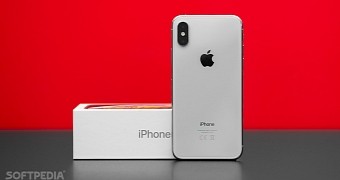
 14 DAY TRIAL //
14 DAY TRIAL // 